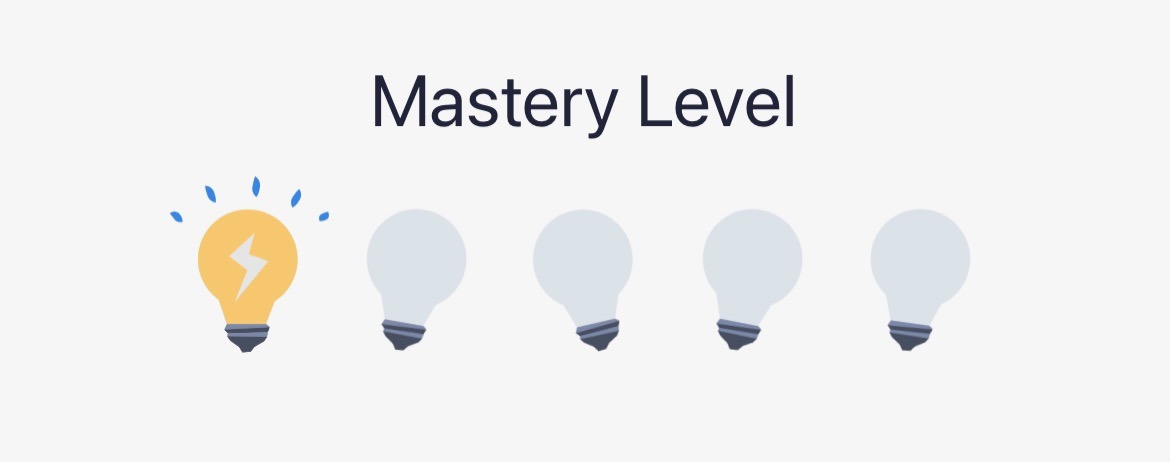Spaced repetition leverages a memory phenomenon called the spacing effect, which describes how our brains learn more effectively when we space out our learning over time. Shiken uses spaced repetition to show you questions at different time frames. Spaced repetition can be switched on or off in the Custom Revision area and is default set to on for quick play. When switched on spaced repetition is visualised to the learner by the Mastery Level and 5 lightbulbs which appear below questions in game mode.
The basis for spaced repetition research was laid by Hermann Ebbinghaus, who suggested that information loss over time follows a forgetting curve, but that forgetting could be reset with repetition based on active recall.
When playing a game with spaced repetition active you will see five lightbulbs below the question once you have submitted your answer.

The lightbulbs represent your mastery of that particular question and your goal is to light up all the lightbulbs to master the question and take it out of circulation. Once you have mastered all the questions in a product you have mastered the product.
If you have never seen a question before you will have no lightbulbs lit or dimmed.
Lit lightbulbs represent correct answers and dimmed light bulbs represent incorrect answers.
When you get a question correct for the first time the first of the five lightbulbs lights up. When you get a question incorrect the lightbulb will dim.

The aim is to light five lightbulbs in a row without any being dimmed.


As you become more proficient at certain questions our spaced repetition algorithm will alter how frequently these questions re-appear.
The basis for spaced repetition research was laid by Hermann Ebbinghaus, who suggested that information loss over time follows a forgetting curve, but that forgetting could be reset with repetition based on active recall.